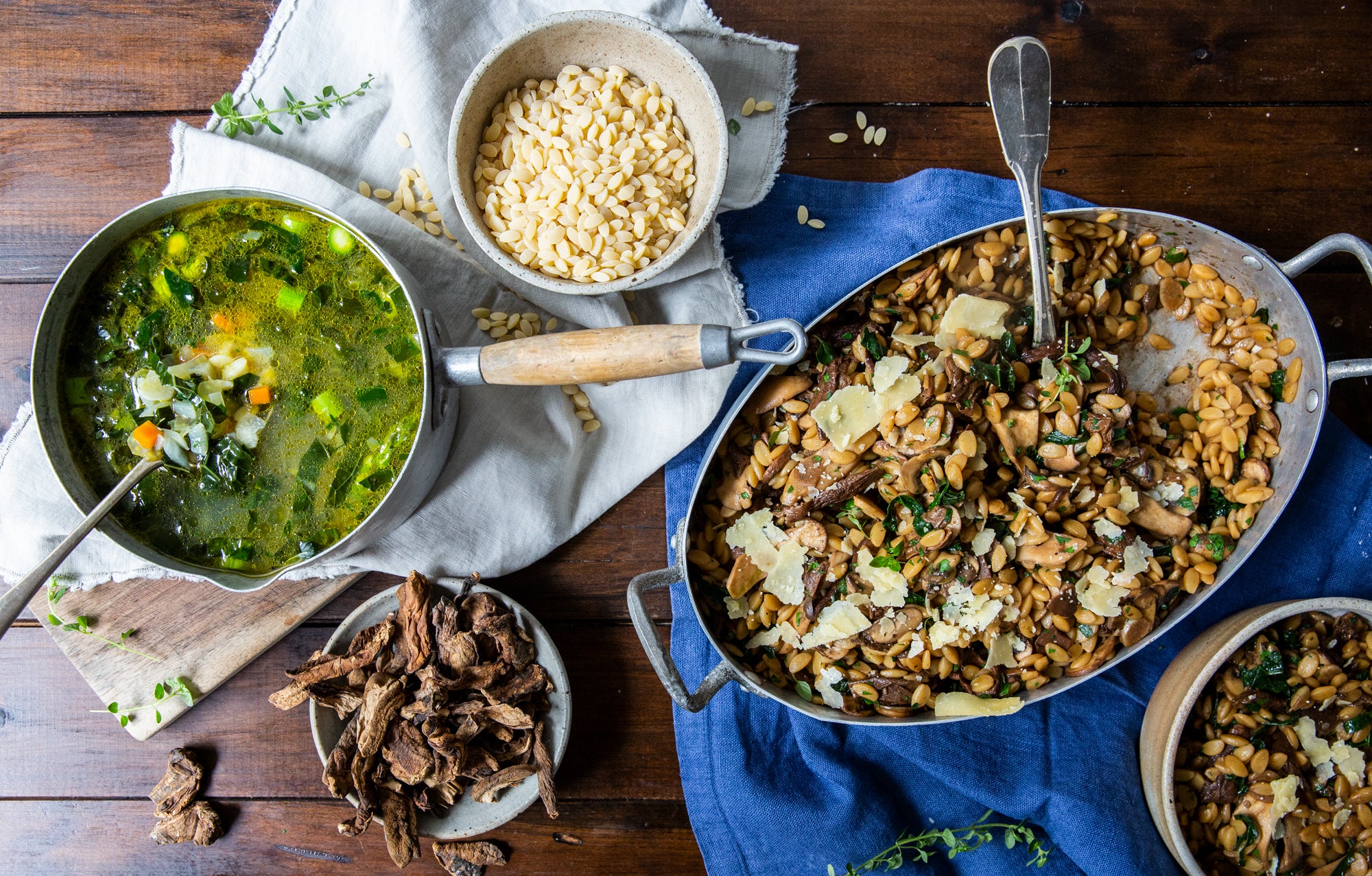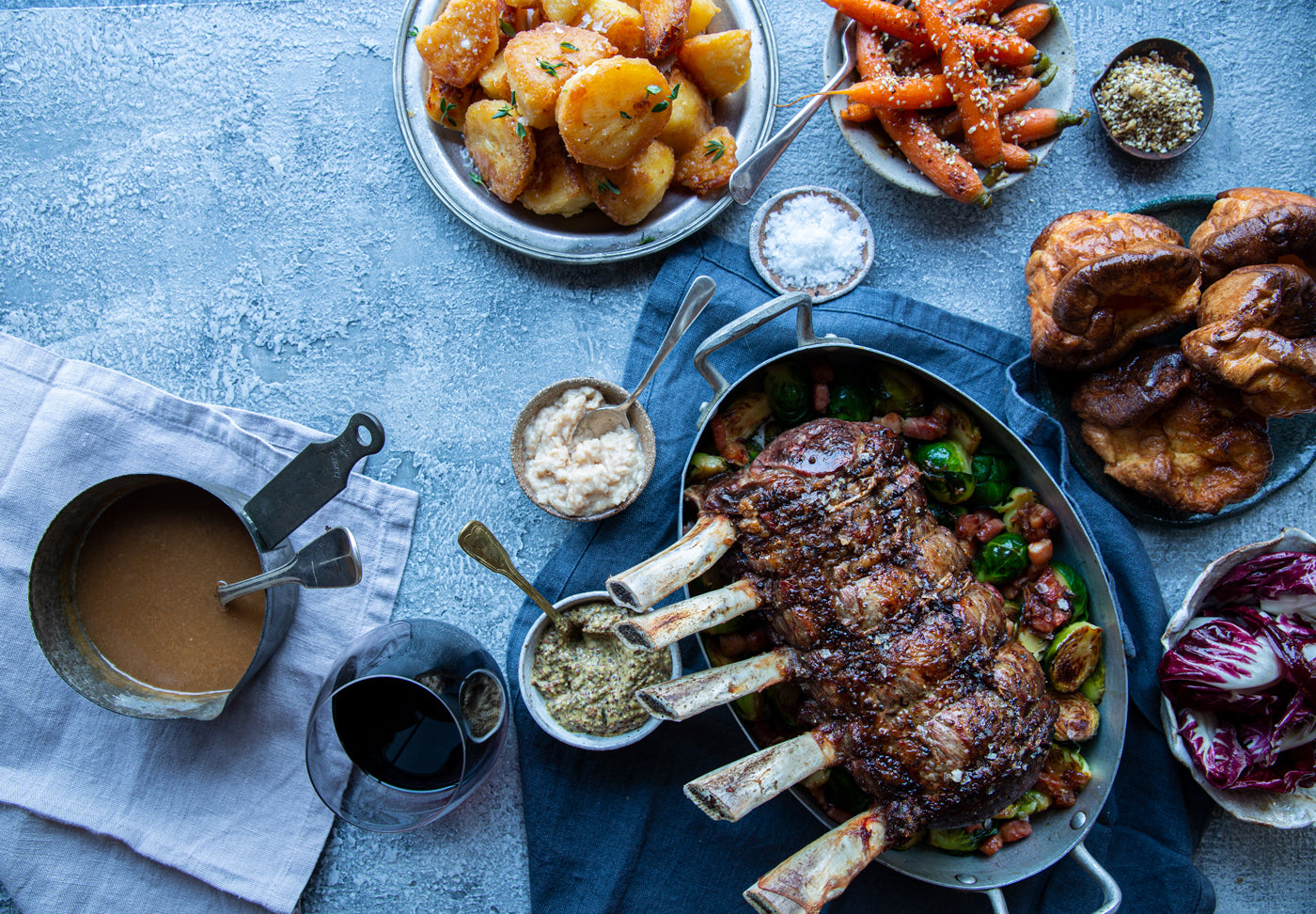
Essential Guide to Dried Pasta
Last updatedIf you're a pasta lover, you've probably encountered the age-old debate: dried pasta vs. fresh pasta. Both have their place in the kitchen and on our plates, but today, we're exploring the world of dried pasta. Although convenient and versatile, and available in an array of shapes and sizes, there are still some rules of thumb to follow when choosing, cooking, and pairing dried pasta to ensure the finished dish is the best it can possibly be. We’ve made this handy guide that will answer (nearly) any questions you’ve had about dried pasta.
The difference between dried and fresh
Dried pasta and fresh pasta both contain the same key ingredients – flour and water – but the key distinction lies in their moisture content. Fresh pasta is made with eggs, giving it a tender and delicate texture. On the other hand, dried pasta is made with just flour and water, and the absence of eggs means it's shelf-stable for a long time. This convenience makes it a staple in most pantries.
Identifying a high-quality dried pasta
Not all dried pasta is created equal. When choosing the best quality, keep an eye out for durum wheat semolina as the main ingredient. This type of ‘hard’ wheat is high in protein and gives the pasta a firm texture, helping it hold its shape when cooked.
Opt for brands that use traditional manufacturing methods, as they tend to have superior flavour and consistency. We like I Due Pastori and Pasta Borella. One key characteristic to look for is the surface texture. Premium dried pasta is often shaped using bronze or ceramic die extruders, giving it a rough and porous surface. This might sound odd, but trust us, it's a mark of great pasta! This roughness allows the pasta to hold onto sauces more effectively, unlike the smooth surface of cheaper mass-produced alternatives, ensuring that every bite is infused with flavour.
Remember, investing in high-quality dried pasta is like laying the foundation for a delicious and satisfying meal. So, don't hesitate to spend a little extra on a brand that takes the time to craft their pasta using traditional methods. The difference in taste and texture will be well worth it!
How to Cook Dried Pasta
Cooking dried pasta is a breeze, but there are a few tricks to make it perfect every time:
- Use a large pot. To prevent the pasta sticking to itself, use a pot that gives the pasta plenty of space to roll and move around.
- Add salt. Generously salt the boiling water; it should taste like the sea. This enhances the pasta's flavour.
- Stir occasionally. Stir the pasta immediately after adding it to the pot and a few times while it cooks to prevent clumping.
- Taste test. The cooking time mentioned on the package is a good guideline, but the best way to know if it's done is by tasting it. Pick out a piece 1-2 minutes before the full cooking time and take a bite. Look for that ideal al dente texture.
- Save a cup of water. Before straining the pasta, reserve a cup of the starchy cooking water. This can be added to your pasta sauce! The starch adds a silky richness, and the salt lends extra flavour.
- Don’t! Do not add any oil to the water when boiling. This can make the surface of the pasta too slippery for the sauce to properly adhere. Do not rinse the pasta after straining. This removes the starches that help the sauce to cling to the pasta. If using in a cold dish like a salad or not serving immediately, a quick rinse is fine.
What is al dente and is it necessary?
'Al dente' is an Italian term that translates to "to the tooth." It refers to pasta that is cooked to be firm when bitten. Cooking pasta al dente is crucial because it retains a slightly chewy texture, signifying that it's not overcooked, and nobody likes mushy pasta.
Different pasta shapes and the best sauces to pair with
Shapes really do matter! Not all pastas go with all sauces. The pairing of different shapes and sauces is all about the eating experience.
Long
These are good with sauces that will cling to the lengthy strips. Thick long pasta can handle big hearty sauces and thinner pasta is best suited to lighter sauces.
- Spaghetti - A classic long, solid, cylindrical shape. Great for Carbonara, Puttanesca, Aglio olio e Pepperoncino, and Cacio e Pepe.
- Spaghettini Fini - Very fine spaghetti. Pair with grated bottarga, lemon and extra virgin olive oil, then top with breadcrumbs.
- Spaghetti Alla Chittara - Square shaped. Pair with a simple tomato-based sauce.
- Bucatini - Spaghetti-like with a hole running through the middle. Perfect for Amatriciana.
- Linguine - Translates to “little tongues”. Flat with a rounded edge and wider than Spaghetti but thinner than Fettuccine. Pair with seafood sauces with clams, or calamari and bottarga.
- Pappardelle - Thick wide ribbons. Pair with heavier sauces like lamb ragu.
- Maccheroni Al Ferretto - Long, rustic tubes with curled edges that can trap sauces. Pair with sausage ragu or Puttanesca.
- Mafaldina - Also known as Reginette. Thick ribbon with a wavy ruffled edge. Pair with Bolognese, Napoletana or any textured sauce.
Small
Good for trapping heartier sauces with chunks of meat or vegetables, or textured sauces like pesto.
- Orecchiette - The curled cup shape resembles little ears. Great with rustic broccoli and anchovy, or a Ligurian walnut sauce.
- Capunti - Looks like open pea pod. Pair with creamy or rich vegetable sauces, truffle sauces, or pesto with spring peas and lemon zest.
- Canestrini - Translates to “little baskets”. Perfect for holding pockets of rich ragu and chunky tomato sauces or in a baked pasta dish.
- Trofie - Rolled into small, twisted lengths. Traditionally served with pesto.
- Penne - A classic tubular pasta, sometimes featuring a ribbed surface. Fantastic with tomato based sauces like a spicy Arrabiata or a creamy vodka sauce.
Tiny
Easy to scoop up, so perfect for soups and salads.
- Fregola - A Sardinian favourite. Pearls of toasted semolina dough. Chewy like a grain, this shape is perfect for pasta salads, or cooked like a risotto and served loose and saucy. Beautiful served under chargrilled seafood, with extra virgin olive oil, herbs, and lemon.
- Risoni - Also known as Orzo. Rice shaped. Use in rustic soups like Minestrone or Avgolemono, or in a baked pasta dish.
Find a wide range of dried pastas in your nearest The Essential Ingredient store, or buy online for delivery to anywhere in Australia.














